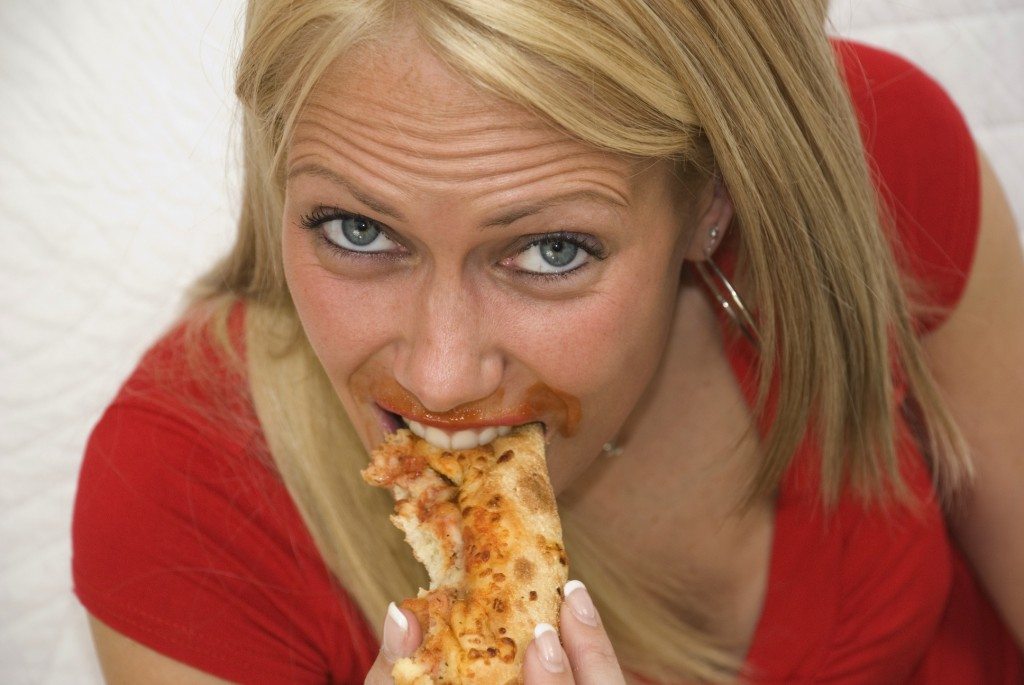The 3 ways your emotions screw up your diet

Not all emotional eating is what we think of as “emotional eating.”
What do I mean by that?
You’d think that when I weighed 265 pounds and overate nearly every day, I was an “emotional eater.” And yes, I ate when I was frustrated or when I was sad, even when I was bored. That’s how we’ve come to define “emotional eating.”
But there are two other types of emotional eating that we need to understand, because frankly, eating because you’re frustrated or sad or bored is just the tip of the iceberg.
Here are the three different scenarios when our emotions dictate what’s on our plate:
- Emotional eating. This is what we typically think of as emotional eating. Throughout the 20+ years I spent as a morbidly obese adult I turned to food as a “pressure value” to release pent up frustration.These are almost always feeling of alienation: frustration, anxiety, anger, resentment, loneliness, isolation, hopelessness, and futility. Though the feelings are powerful, they are generally not episodic (something happened and you’re pissed so you open a bag of Doritos and down the whole thing).These are the emotions that smolder, like a slow-burning fire. In many cases we’re not even consciously aware of them. In nearly every case they’re very destructive because we don’t feel entitled to give them voice. The underlying problem festers and therefore the feelings – and the behavior (emotional eating) – remains.The important thing to remember about emotional eating is that these emotions are triggered from the inside. They exist independently of the food. You’d feel them whether you reached for the double bacon cheeseburger or not.
- Food addiction. Our emotions are a part of our eating choices also because of underlying food addiction.The salt, sugar, and fat that are a huge component of processed and restaurant foods – and that have come to define the Standard American Diet – create neural activity in our brains that mimic the feel-good dopamine rush experienced by drug, alcohol and nicotine users.Brain scans of people who are highly-affected by arousing food show that potent memories (holiday traditions with family, for example) cement a positive association with a particular food (say, pumpkin pie or Sunday night pot roast). That positive association is imbued with emotion: happiness, contentment, joy, love.This type of emotional eating is driven by the food itself, from the outside in.What makes it addictive is A) the nature of the food (that salt, sugar, fat combination that lights up our brains like a pinball machine), and B) the emotion that we associate with that food.For more help with food addiction, take my food addiction quiz and consider my 28 Days to Overcoming Food Addiction online course.
- Emotional aftermath. Both of the previously mentioned forms of emotional eating have emotional repercussions.The fallout of these eating behaviors hits us like emotional napalm. We are overwhelmed with a flood of negative emotions: guilt, shame, regret, and disappointment in ourselves. “Oh shit!” we berate ourselves, “I did it again!”The vicious cycle of emotional eating revs into high gear and throws us into that all-too familiar pattern of overeating (whether cued by emotional eating or food addiction, or both) followed by regret, shame, etc. We feel really bad … for a while, but then we tuck those emotions away again. Until the next time it happens.Emotional eating’s aftermath teaches us that we’re incapable of not overindulging, leaving us feeling helpless to break the cycle.
So how the hell do we get out of this destructive pattern of letting our emotions dictate our eating?
Three ways, all of which are much easier said than done:
- Create mindfulness. Emotional cues lose much of their power when we shine the light of day on them.Emotional eating (#1 above) happens because we’re literally stuffing down our feelings.We suppress the feelings because, well let’s face it, who wants to feel all that negative stuff? Nobody. But learning to sit with the discomfort of those feelings and unraveling the tangled web of where they come from (past trauma, dissatisfaction in our relationships or our work, financial pressure) can be tremendously liberating.
- Reach for support. Food addiction (#2 above) requires all three of these tools, but more than any other we must reach out for support.Connection – in the form of compassionate (but not enabling) friends, and professional support to better understand our internal biology and conditioning – is vital to overcoming food addiction.Again, I encourage you to take my quiz to determine if you have an underlying food addiction and consider the 28 Days to Overcoming Food Addiction It’s an excellent start to managing food addiction.
- Practice self-compassion. The aftermath of emotional eating is often tortuous self-talk. But beating ourselves up over mistakes doesn’t help and only undermines our ability to avoid overindulging the next time.Self-acceptance is the antidote to the negative emotions that fuel emotional eating.
We expect a lot from our food. We want it to nourish us, to fuel our bodies throughout the day. But we also want it to be delicious and satisfying. Where we get into trouble is when we want food to give us comfort, distraction, entertainment or even love.
Emotional eating is a complex problem because we’re complex creatures.
Putting food in its proper place only happens when we’re willing to examine and alter our relationship with it.